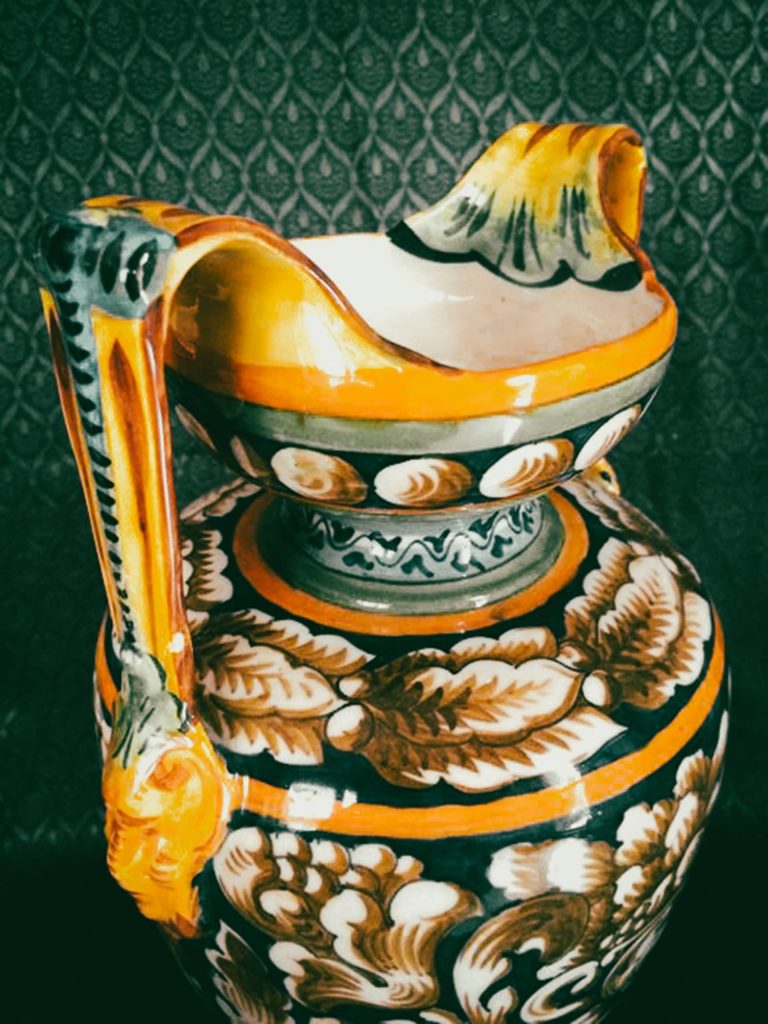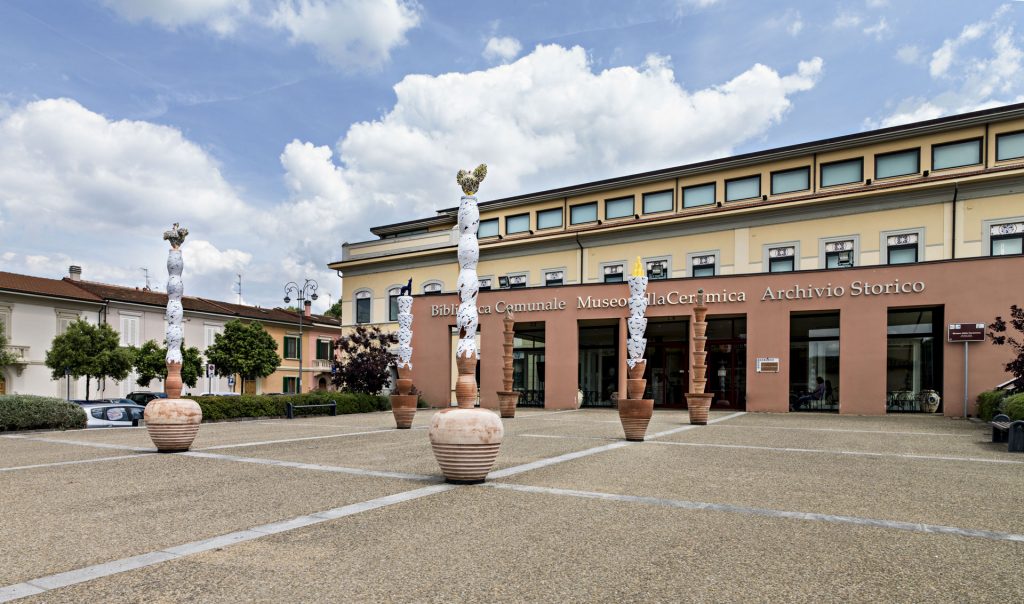As the train from Florence pulls into Empoli railway station, you cannot help but notice an imposing example of industrial archaeology not far from the tracks. Curious about the building that had once obviously been a factory, I soon discovered it was the remnants of a ceramics plant called the Ceramiche Artistiche F.lli Fanciullacci of Montelupo Fiorentino, which has lain dormant for nearly three and a half decades. Purchased by the municipality in 2004 for 650,000 euro, the site is currently a 3,300 square metre ruin. Over the years, various plans and projects to redevelop the area have never come to fruition. Now there seems to be light at the end of the tunnel because, in March 2021, it was announced in the press that several towns in the Empoli-Valdelsa area supported the candidacy of the Fanciullacci factory for redevelopment under the HOME (Home in our Metropolitan Ecosystem) project as a link between the station, Montelupo town centre and the Ambrogiana park. Funds for the work will be allocated by the Italian Ministry of Infrastructure and Transport.
During World War II, Ceramiche Artistiche F.lli Fanciullacci was one of the very few ceramics factories never to shut its doors.
The Ceramiche Artistiche F.lli Fanciullacci was founded by Raffaello Fanciullacci (1803-81) in 1862 under the name of Fornace Bardi Capraia. Raffaello belonged to a family that had worked for count Carlo Andrea Ginori and his manufactory in Doccia, near Florence, for almost a century beginning with the head of the family, Jacopo, and his descendants. The reason why Raffaello, who was the director general of the Ginori factory at the time, decided to go it alone is unclear, but he did so, opening his own company with about 25 workers.
The factory initially concentrated on making simple, saleable table- and kitchenware, jars and pharmacy vases before also venturing into manufacturing artistic majolica. By the late 1870s, his sons, Raffaello, Enrico and Demetrio, had joined him. Business grew and the French, Egyptian and Austrian markets had opened up. Due to a crisis, again of unknown origin, they were forced to sell the business in 1881. The new management did not last long and the brothers regained control of the firm and changed its name to Ceramiche Artistiche F.lli Fanciullacci, where they were the first to introduce the latest technology, like steam-driven machines.

After his father’s passing, Demetrio (1841-95) managed the factory with the help of his sons Ilario, Giovanni, Amedeo and Alfredo until his death. Ilario took the helm with his brothers and together they significantly increased production in the first decade of the new century. In 1913, production was moved from Capraia to Montelupo because of its proximity to the railway as an easy, efficient and cheaper means of transport for their merchandise. By the time of World War I, the factory had a catalogue that boasted almost 1,000 different items. The company entered its golden years in the 1920s, employing more than 130 workers when modern and futuristic items mirroring Cubism, Modernism and the Avant-Garde were added to the range that already featured Raffaellesco, Art Deco and Art Nouveau. During World War II, it was one of the very few ceramics factories never to shut its doors. By the 1950s and 1960s, work resumed at full speed and new international markets were found, which were estimated to account for 90 per cent of the factory’s production.
Disaster struck in November 1966 when the Arno River flooded the factory. More than 1,000 priceless molds were lost, the kilns damaged, and the raw clay and finished products intended for export to the US were swept away. This forced the company to halt operations for more than a year. Production and quality suffered dramatically. Despite efforts by the brothers to change the fate of the company, it finally ceased operations in 1988 and, in 2004, the family sold the property to the city of Montelupo. However, as journalist and author Riccardo Gatteschi tells us in his fascinating book Montelupo, dove la ceramica si fa storia, the Fanciullacci brothers’ business left an important legacy as a training ground for many workers who, over time, would go on to open their own ceramics factories or ateliers.
The Fanciullacci brothers’ ceramics factory
Examples of the work from the Fanciulli brothers’ factory can be seen at the Museo della Ceramica, in Montelupo Fiorentino (piazza V. Veneto 10-11).








